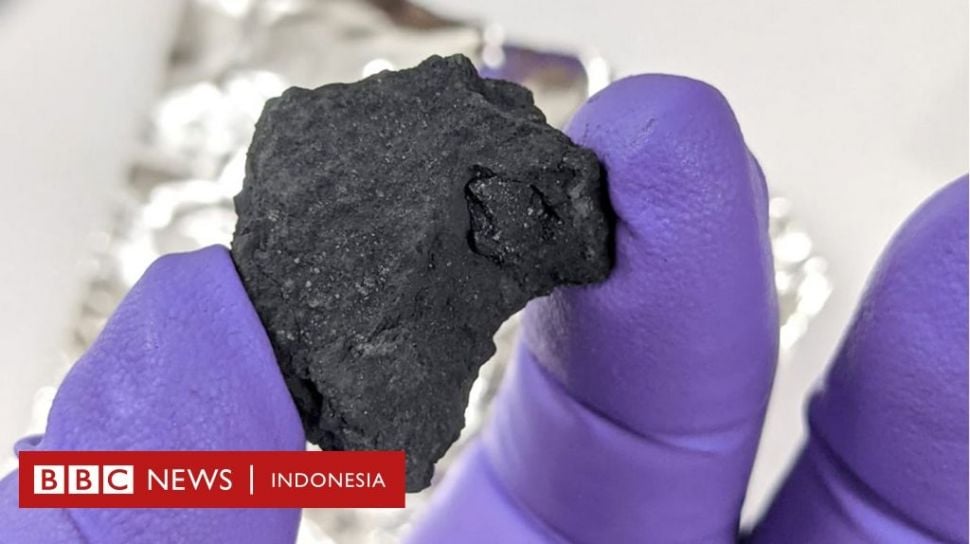Suara.com – Some rock fragments was recovered from a fireball lighting up the skies over southern England more than a week ago. The rocks fall in the area kota Winchcombe of Gloucestershire. A resident first told experts after seeing a pile of charred stones in the corner at the entrance to his home.
Other community members, since then, have disclosed their findings of similar rock fragments.
This is the first incident in the UK after meteor material was last found in Britain 30 years ago.
The researchers were very excited about this finding because of the rarity of this type of rock.
Also Read:
Scientists are skeptical of the existence of the ninth planet in the solar system
The rock fragments are carbon chondrites (Carbonaceous chondrites) – a rock material that retains the unchanged chemical from forming Solar system 4.6 billion years ago.
Dr Ashley King of the Natural History Museum (NHM) said no such rocks had been recorded in Britain before.
“Carbon chondrites are very special because they are basically the remains of the material that makes up our Solar System.
“Many contain simple organics and amino acids; some of them contain minerals formed by water – so, all the ingredients are there to understand how you make a habitable planet like Earth,” he told BBC News.
Thousands of people have reported seeing a blazing light in the sky at 9:54 p.m. local time on Sunday, February 28. However, most importantly, the incident was also caught in the line of special cameras operated by the UK Fireball Alliance (UKFAll).
Also Read:
Scientists confirm the farthest object in the solar system ever found
Their information can pinpoint where the debris might have fallen.
“Somewhere north of Cheltenham, towards Stow-On-The-Wold,” he predicted. It’s like looking for a “needle in a haystack,” but researchers are lucky.
Several meteors fell near the entrance to the Winchcombe residents’ house.
Dr Richard Greenwood was sent to meet Winchcombe residents, who wish to remain anonymous.
“I looked into the plastic bag, and my legs were wobbly. It’s incredible. This is a very special meteorite,” said the Open University researcher.
A search team was immediately dispatched to search the local area for more rock fragments. And, in the meantime, other homeowners started telling scientists about their discoveries too.
In total, there should have been 300-400 grams of material, most of which now belong to the NHM status.
The meteor rock shard was tiny – similar to the marble Prof Monica Grady, also from the Open University, described it as “broken barbecue briquette. This is one of the most beautiful things I have ever seen”, she told BBC News.
It is difficult to overstate how important these findings were to the development of British meteorology.
Of the approximately 65,000 meteorites stored around the world, only 1,206 were witnessed by witnesses at the time of the fall, and only 51 were of the type of carbon chondrite. Because these fireballs were tracked through cameras when they entered the earth’s atmosphere, these rocks managed to enter Earth’s orbit.
The object originates from the outer belt of the asteroid, and exits toward Jupiter.
This means that the composition will almost certainly be very primitive. “
Basically, these rock fragments are part of the Solar System that we think is like being frozen from 4.5 billion years of material, “said Prof. Sara Russell of NHM.
“It doesn’t have a chance to change at all from pre-planetary time. This will give us insight into what our Solar System was like before the planets were there.”
The American and Japanese space agencies have sent explorers to bring back similar material from the asteroid itself.
But the Winchcombe meteorite would be an almost equally good subject to study, said Dr. Greenwood.
“Yes, it will be affected by a trip through the atmosphere, but it must be very close to the original. The people at Winchcombe who assembled it did so within 12 hours of the fall. It’s as good as you will ever get on this earth.”
The last fallen space rock was found in England in 1991 – the so-called Glatton Meteor Rock, because it fell in the village of Glatton near Peterborough.
Arthur Pettifor was in his onion garden when the 10 cm rock fell near the fence of his house.
There are likely more fragments of the Winchcombe meteor rock still waiting to be discovered.
Scientists appeal to people in the region to remain vigilant. They look for small, blackish stones, or even dark piles of dust.
Anyone who finds what may be a possible meteorite is asked to photograph it at the location of the discovery, recording GPS coordinates, if possible.
The object must then be placed in foil. And, this time it’s a must, don’t put the magnet near the material.
The reason is, it can destroy important information needed to study the stone.
The research at Winchcombe also involved scientists from the universities of Glasgow, Manchester, Plymouth and Imperial College London.
– .


